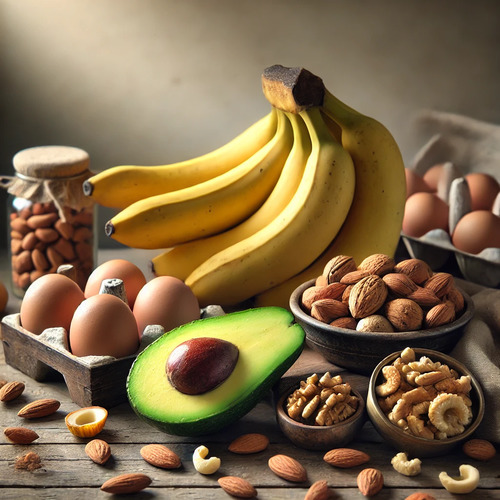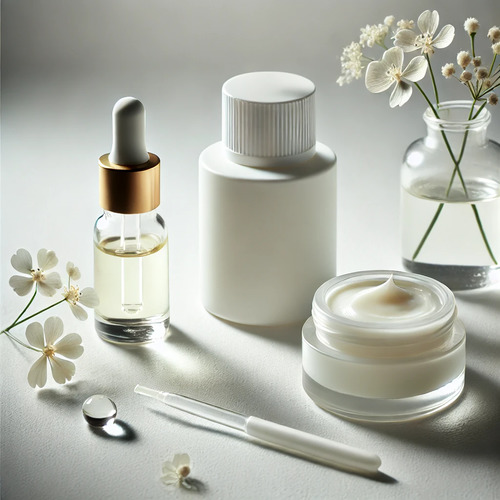When we think of aging, wrinkles and grey hair usually come to mind. However, besides these obvious signs, there is another change that often goes unnoticed - the condition of our nails.
Experts say that changes in the body from the age of 40 onwards are a natural process. But despite the inevitability of these transformations, there are many ways to keep them in good condition and improve their appearance. Today, we will look at how to properly care for your nails after 40 to keep them healthy and beautiful.
Experts say that changes in the body from the age of 40 onwards are a natural process. But despite the inevitability of these transformations, there are many ways to keep them in good condition and improve their appearance. Today, we will look at how to properly care for your nails after 40 to keep them healthy and beautiful.
Cuticle care
Cuticle care is a key part of nail care that affects the health and appearance of your nails. Regular moisturising and using quality professional tools, such as cuticle scissors, will ensure a perfect manicure. It is important to remember that tools should be thoroughly disinfected after each use to prevent infections. You should approach the cuticle with care to avoid damaging the nail matrix, as improper grooming can lead to undesirable consequences. If you are not sure how to properly care for your cuticle, it is best to gently push it back rather than cut it to avoid injury.
Use of various moisturising creams and oils
For effective nail care as you age, experts recommend using professional products that provide maximum nail health care.
A simple routine includes filing your nails with a quality file to the desired length, as well as regular application of specialised oils to stimulate growth and keep the nail plate healthy. These professional products help to keep your nails in top condition, ensuring they look well-groomed and healthy for longer.
Avoiding hot water
It may surprise you, but traditional hand washing with soap and hot water can be more aggressive than it sounds. This combination often causes dry and irritated skin, which over time can lead to dermatitis, affecting the cuticle as well. Inflammation in this area can change the texture and shape of the nails, making them thin, brittle and vulnerable.
To avoid these problems, it is important to choose a soap or moisturising serum that suits your skin type. A consultation with a dermatologist can help you choose the best products to moisturise and protect your skin and nails. It is also advisable to limit contact with hot water and use protective gloves when doing household chores to minimise exposure to harsh chemicals and moisture.
Use professional and well-sterilised tools
Using nail files that are too rough or abrasive can damage the nail plate, making it uneven and brittle. To keep your nails healthy and beautiful, choose professional tools of high quality.
It is equally important to make sure they are regularly disinfected - this will help avoid infections and damage.
If you are looking for reliable nail care tools and products, pay attention to globalfashion.md online shop, where you will find a wide range of professional products. The right choice is the key to strong, well-groomed and beautiful nails!
Do not shape your nails with a nail clipper
One common mistake that can be made due to lack of patience or time is to improperly shape your nails with a nail clipper or scissors. This approach can have a negative impact on their health and appearance.
It is important to trim your nails so that there is enough length left for a neat design. Improper trimming - too short or overly rounded - often becomes the cause of ingrown nails.
Manicurists recommend choosing a shorter, round or oval shape, as it helps to compensate for the loss of volume in the fingers and hands, which often occurs after the age of 40. However, if you like long nails, such as the stiletto shape, you can continue to wear them, but it is important to pay attention to proper trimming and maintenance to avoid potential problems.
Take care of brittle or thin nails
After the age of 40, nails can become more brittle and prone to splitting, so they need special care. If there are no signs of inflammation, pain or infection, you can continue to polish them even if they look brittle. Use special oils and nail care products to strengthen your nails. If gel lacquer or gel does not help, it is better to temporarily abandon them. It is also important to remember: nails should not ‘breathe’, so it is safe to care for them with quality strengthening polishes.
Watch out for changes in nail colour
Nail discolouration is a natural process that can occur with age. However, the appearance of pronounced discolouration or streaks, especially dark yellow or red, may indicate a fungal infection or other diseases. In such cases, it is advisable to consult a medical specialist for an accurate diagnosis and selection of the necessary treatment.
Proper nutrition
A healthy and balanced diet plays a key role in maintaining healthy and beautiful nails. It is important to follow a healthy lifestyle, ensuring that your body gets all the vitamins and minerals it needs. Keep an eye on your iron levels, blood sugar levels and thyroid health as anaemia, diabetes and hormonal disorders can have a negative impact on your nails. Good nutrition and good health in general will keep your nails strong, well-groomed and beautiful.

While oral supplements such as biotin may seem like a tempting solution, it is important to consult your doctor first before taking them.
Choose your salon carefully
As we age, choosing a nail salon becomes just as important as the nail care itself. The key is to choose a place where safety and hygiene practices are strictly adhered to, including proper sterilisation of tools and equipment.
Following these guidelines will help you maintain beautiful and healthy nails at any age. Pay attention to the tools you use and always adhere to hygienic practices. If you notice changes on your nails or are concerned about any symptoms, don't hesitate to see a dermatologist. It is important not only to follow the appearance of your manicure, but also to take care of the health of your nails, preventing possible problems and taking timely action.
As we age, the body undergoes natural biological changes that can affect the health and appearance of our nails. Changes in cholesterol levels, an important element for nail structure, as well as poor circulation can lead to problems such as brittleness, flaking and loss of strength. Over time, irregularities often appear on the nails, including longitudinal streaks and ridges. At a microscopic level, mature nail cells can separate, lift and flake off, which explains phenomena such as flaking and peeling, as well as difficulty in applying nail polish evenly. In addition, nail growth slows down significantly after the age of 40, making nails more vulnerable to damage and discolouration.
Read also: 9 Myths About Manicure and Nail Care
Read also: 9 Myths About Manicure and Nail Care

